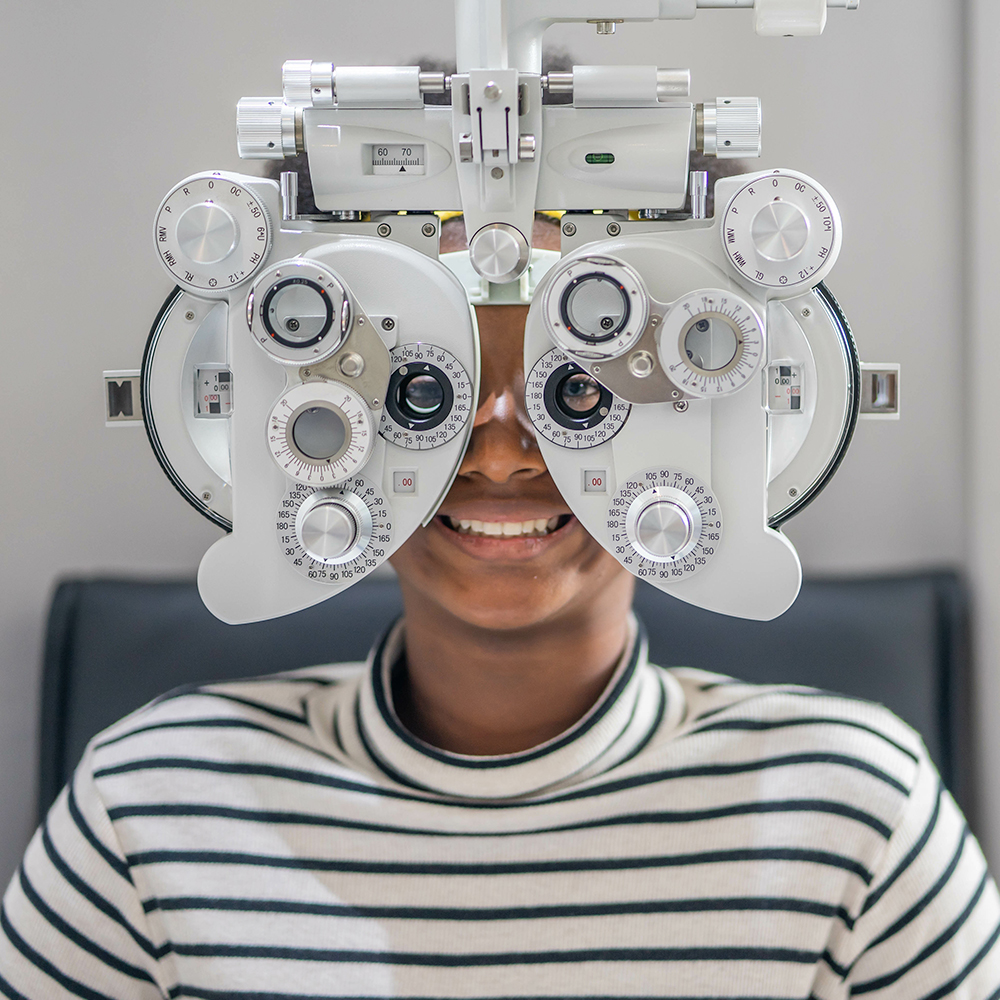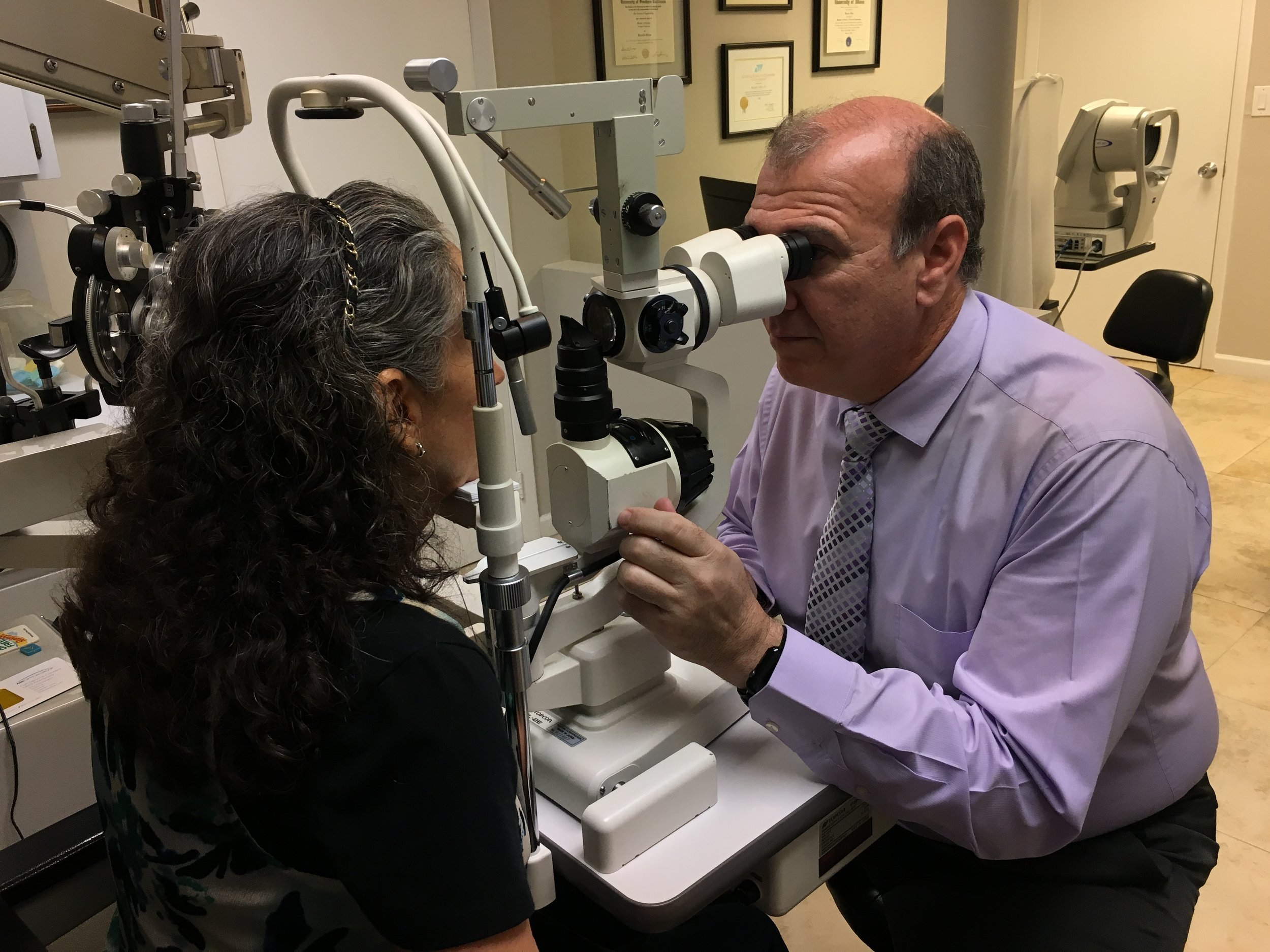Checking Out the current Technological Innovations in Optometry and What They Mean for Eye Doctors
In the ever-evolving field of optometry, current technical developments are reshaping how experts come close to eye care. From the precision of Optical Comprehensibility Tomography to the nuanced insights used by AI-driven analysis tools, these advancements are setting new standards in patient analysis and treatment. Teleoptometry is poised to redefine ease of access, ensuring that know-how transcends geographical constraints. As these developments penetrate the method, eye doctors are confronted with the obstacle of welcoming these devices to boost individual outcomes. The question stays: just how will these technological changes redefine the duties and responsibilities within the career?
Advancements in Diagnostic Devices
Progressing the field of optometry, developments in diagnostic devices have actually reinvented the way eye treatment professionals assess and detect aesthetic problems and eye conditions. The previous decade has actually experienced considerable technical innovations, making it possible for more accurate and thorough analyses.
One more trick advancement is the introduction of innovative corneal topography systems, which map the surface curvature of the cornea with accuracy. These tools are particularly valuable for fitting get in touch with lenses and diagnosing corneal conditions. In addition, digital retinal imaging has actually changed conventional ophthalmoscopy, using detailed, scenic sights of the retina that facilitate complete aesthetic evaluations.
The advancement of wavefront aberrometry has additionally been crucial, allowing the evaluation of refractive mistakes with unequaled accuracy (Eye Doctor Optometrist). This technology assists in tailoring corrective lenses and enhancing surgical results for refractive surgeries. Collectively, these diagnostic developments equip optometrists to provide exceptional person care, ensuring early treatment and tailored treatment techniques, eventually improving visual health and wellness results
AI in Individual Administration
Structure on the structure of sophisticated analysis tools, the unification of expert system (AI) in client management represents a transformative jump for optometry. AI systems are increasingly used to improve effectiveness, precision, and personalization in client care. By analyzing large amounts of information, AI can determine patterns and forecast potential ocular conditions, making it possible for eye doctors to customize interventions better. This ability is critical in taking care of persistent eye illness such as glaucoma and diabetic retinopathy, where very early detection and continuous monitoring are vital.
Moreover, AI-driven systems assist in structured client communications and administrative procedures. Automated scheduling, online consultations, and individualized follow-up plans not just boost client complete satisfaction yet likewise enhance time management for practitioners. These systems can triage people based on the seriousness of their problems, ensuring that those in important need get timely focus.
Furthermore, AI enhances decision-making by offering optometrists with evidence-based referrals and therapy pathways. By integrating data from electronic health and wellness documents, AI devices offer insights that notify professional decisions, decreasing the danger of mistakes and enhancing person end results. As AI remains to evolve, its role in client administration will likely increase, improving the landscape of optometric treatment.
Breakthroughs in Retinal Imaging
In the realm of optometry, retinal imaging has seen exceptional technical advancements that are boosting analysis capacities and patient care. Advancements such as Optical Coherence Tomography (OCT) and fundus photography have actually reinvented how eye doctors picture and evaluate the retina.
Improved imaging modalities like OCT angiography are more refining diagnostic accuracy. This non-invasive method maps blood circulation in the retina, using vital understandings into vascular health without the requirement for dye shots. Furthermore, adaptive optics modern technology is being integrated right into retinal imaging systems to correct eye aberrations, delivering unmatched image clearness. Such advancements assist in the identification of min retinal changes that might signify illness development.
Furthermore, innovations in expert system are augmenting retinal imaging by enabling automatic evaluation of huge datasets. These systems help eye doctors in recognizing patterns indicative of pathology, consequently boosting diagnostic accuracy and effectiveness. Jointly, these technologies are transforming retinal imaging into a foundation of contemporary eye treatment, boosting end results and increasing therapeutic possibilities.
Teleoptometry's Expanding Role
Teleoptometry is significantly becoming an important part of eye care, driven by developments in data and analysis tools. As optometry embraces electronic change, teleoptometry assists in remote examinations, enabling eye doctors to extend their services past traditional boundaries. This is especially beneficial in underserved and rural areas where access to specialized eye treatment is usually limited. By leveraging high-resolution video conferencing and advanced retinal imaging, optometrists can conduct extensive eye examinations check it out from afar, guaranteeing prompt diagnosis and treatment.
The combination of expert system (AI) additional boosts teleoptometry, allowing the evaluation of visual information and helping in the discovery of ocular problems such as glaucoma and diabetic person retinopathy. AI-powered algorithms can rapidly analyze complicated imaging data, giving optometrists with beneficial insights that bolster professional decision-making.
Additionally, teleoptometry supports connection of treatment with smooth combination with digital health and wellness documents (EHRs), enabling eye doctors to maintain thorough client backgrounds. When seeking advice from with different specialists., this ensures that clients obtain consistent and individualized care also.
Despite these advantages, difficulties continue to be, including guaranteeing information security and managing individual assumptions. However, teleoptometry represents a considerable stride in the direction of even more accessible, efficient, and patient-centered eye care. As technology progresses, its duty is positioned to expand additionally.

Future Trends in Eye Care
A myriad of innovative patterns is readied to improve the future of eye care, driven by technological developments and the developing requirements of clients. One considerable trend is the integration of artificial intelligence (AI) in diagnostics, which assures to boost the accuracy and effectiveness of eye assessments. AI algorithms can evaluate large amounts of data from retinal images, potentially identifying problems like diabetic retinopathy and glaucoma earlier than conventional approaches.
In addition, personalized medication is getting grip in optometry, with genetic screening educating tailored therapy plans. This approach intends to find optimize client outcomes by customizing interventions to individual genetic profiles. Wearable technology, such as clever get in touch with lenses, is likewise coming up, offering real-time surveillance of intraocular pressure or sugar degrees, thus giving constant insights into ocular and systemic wellness.
The adoption of augmented truth (AR) and virtual fact (VIRTUAL REALITY) in training and person education is an additional emerging fad. These modern technologies use immersive experiences that can enhance understanding and abilities both for patients and eye doctors. As these trends progress, optometrists must remain abreast of technical innovations to offer advanced treatment, ensuring enhanced individual outcomes and contentment in the dynamic landscape of eye care.
Verdict

Collectively, these analysis innovations encourage eye doctors to provide remarkable client care, guaranteeing early intervention and customized therapy strategies, ultimately enhancing aesthetic health and wellness results.

As these modern technologies continue to progress, optometrists need to adjust and integrate them right into method, ultimately maximizing process effectiveness and elevating the standard of eye care provided to people.